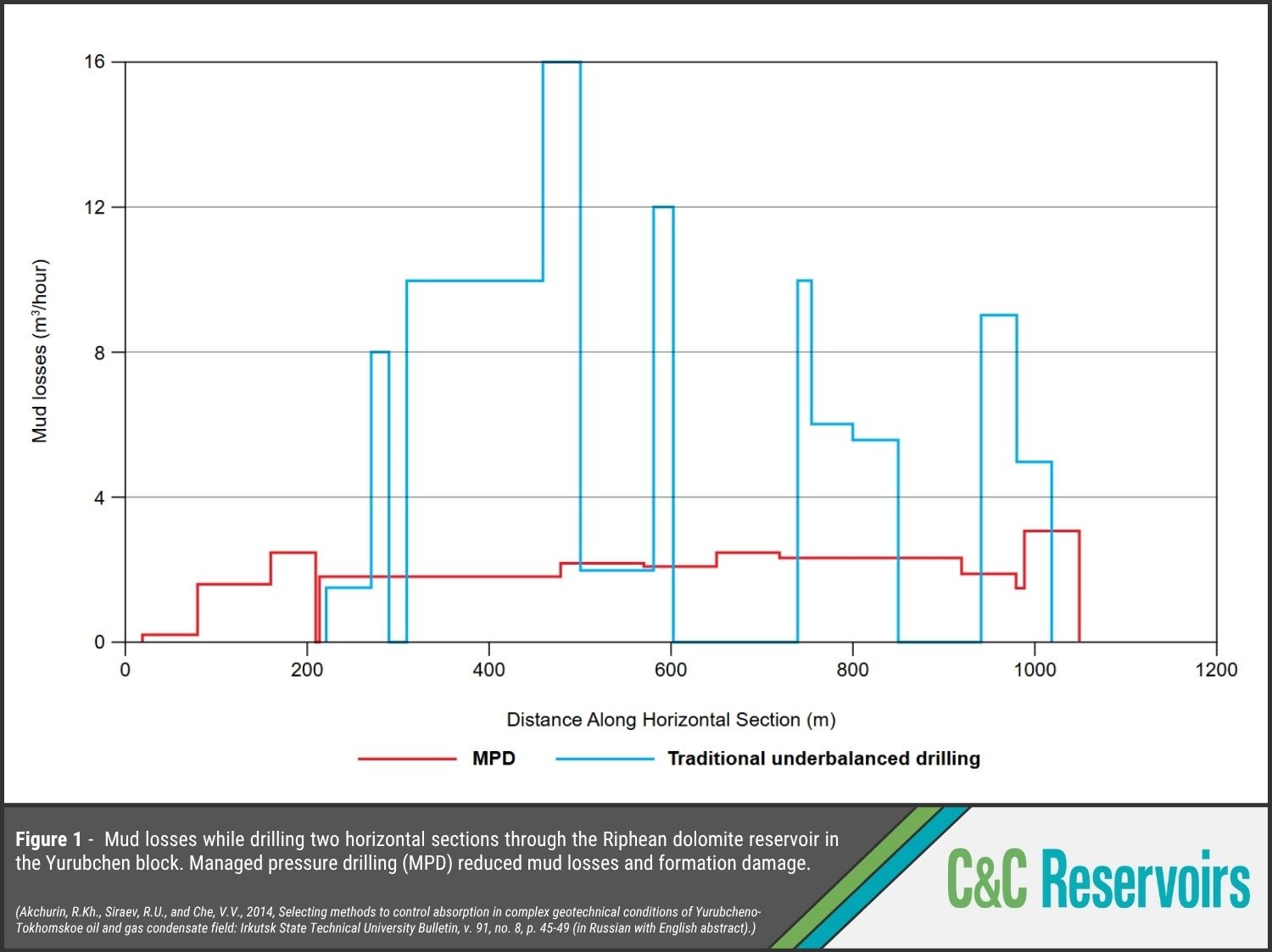The Yurubchen-Tokhomo Field
Analogue Spotlight
Home to the world’s oldest sedimentary hydrocarbon reservoir, Russia’s Yurubchen-Tokhomo Field has a STOIIP of 3504 MMBO and an EUR of 1323 MMBO. However, accessing Yurubchen-Tokhomo’s impressive reserves has been fraught with difficulty.
The root of the issue lies in the fractured, karstic reservoir, which is prone to serious drilling mud losses. The Proterozoic dolomitic limestone is a dual-porosity system containing vugs, caverns and fractures which deliver an average porosity of 12%, reaching up to 30% locally. To make matters worse, the reservoir is severely underpressured. As such, attempts to drill – whether using overbalanced or traditional underbalanced methods – were hindered by severe mud losses.
To mitigate the mud losses, managed pressure drilling (MPD) was trialled in two pilot wells between 2012 and 2014. The approach showed early promise with mud losses falling from several thousand cubic meters per well to an average of 2081 m3/well (Fig. 1). Additionally, horizontal drilling times were reduced by 30% per 1000 m of horizontal section, and initial production rates increased 4.5-fold due to reduced formation damage. However, MPD proved insufficient in lowering equivalent circulating densities (ECD) to required levels. This limitation culminated in the abandonment of a multilateral horizontal well in 2016, after losing 9000 m3 of mud.
To address this, dynamic pressure drilling (DPD) was introduced later that year and trialled in four wells. By circulating nitrogen gas through the mud to lower ECD and rapidly counter pressure drops in lost circulation zones, DPD cut mud losses significantly – from 2870 to 856 m3/1000 m (Fig. 2). Now established as standard practice, DPD not only outperforms overbalanced drilling and MPD in efficiency, but also enhances initial well rates by further decreasing formation damage by mud infiltration.


